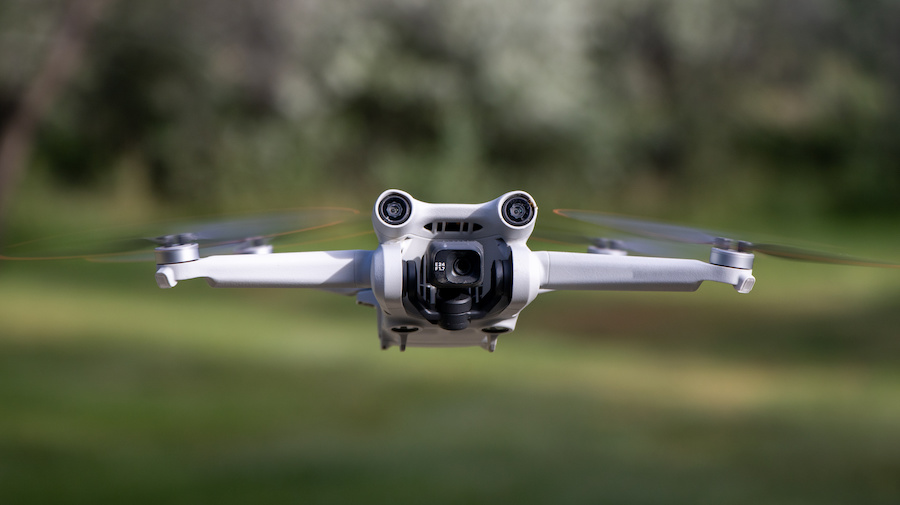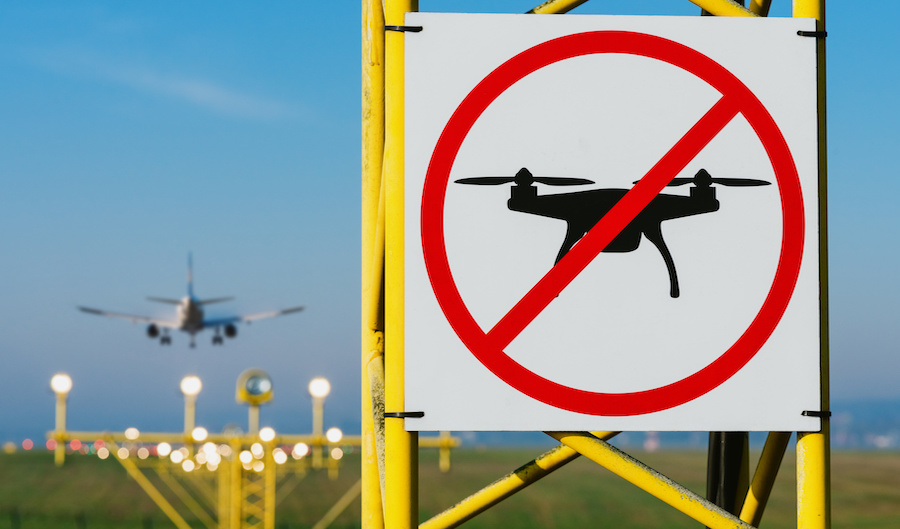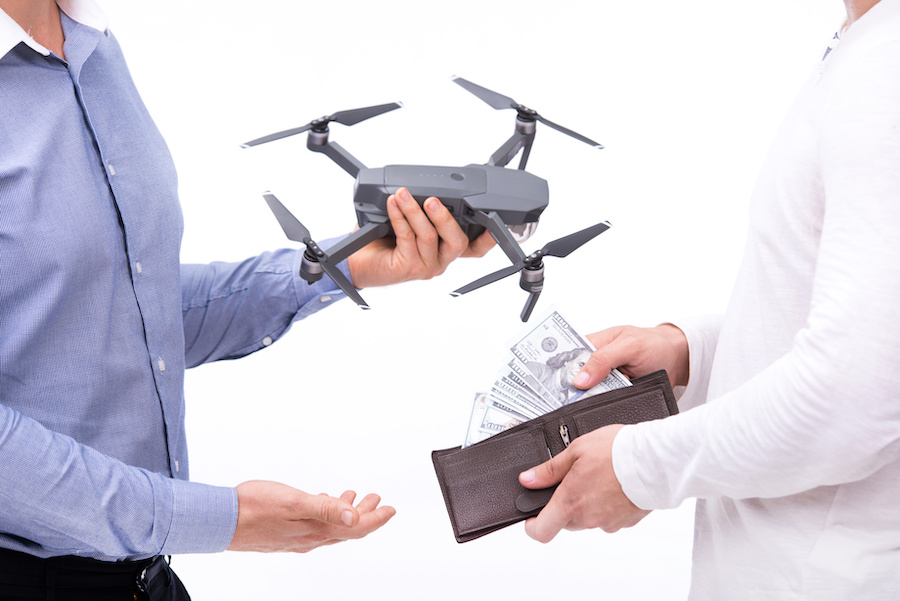Drones that weigh 250 grams and above need to be registered with the FAA regardless of whether they are meant to be used recreationally or commercially. This has created a thriving market for sub-205-gram drones that can be used out of the box without having to go through registration.
The DJI Mini 3 Pro is currently the best drone in this weight class with its excellent camera, obstacle avoidance sensors, and the ability to shoot in true portrait mode.
Best Budget Drone Under 250 Grams: DJI Mini SE
There is also a wide range of exceptional to above-average drones that weigh less than 250 grams, as we shall list down below.
Note: As an Amazon Associate Pilot Institute may earn compensation from link clicks on this page. This does not increase the cost for you.
What are the laws for flying drones under 250 grams?
The FAA does not require registration of drones that weigh less than 250 grams if they are going to be used only for recreational purposes. This is the single best incentive to buy one of these compact and lightweight drones.
However, recreational pilots are still required to take The Recreational UAS Safety Test (TRUST). This is a completely online test designed to teach the basics of safety in drone operations. You can take the TRUST for free right here at Pilot Institute.
If you plan to fly commercially, then you will still need to register your drone even if it weighs less than 250 grams. This means assigning it a unique registration number and marking the drone accordingly. Don’t forget to always bring your Part 107 remote pilot certificate whenever flying a drone commercially.
Take note that the 250-gram limit applies to the take-off weight of the drone. Most of these drones weigh just below this limit. This means that equipping them with any accessory, such as lights or propeller guards, can very well take them over the weight threshold. Keep this in mind if you plan on flying your drone without an FAA registration.
It costs $5 to register your drone with the FAA.
Best Drones Under 250 Grams
1. DJI Mini 3 Pro
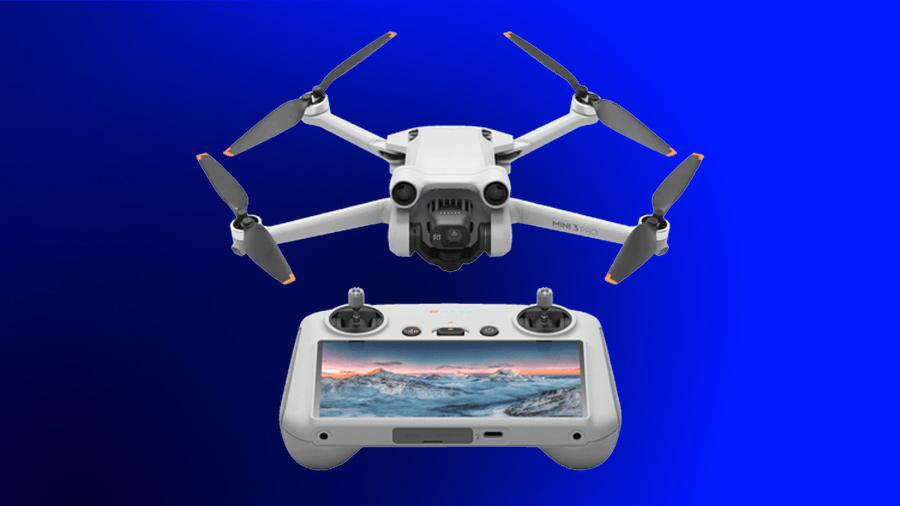
| Key features | |
| Image sensor | 1/1.3” CMOS |
| Image stabilization | 3-axis mechanical gimbal |
| Video resolution | 4K/2.7K/1080p @ 60 fps ; 1080p@120 fps |
| Image resolution | 48 MP (Quad Bayer Sensor) |
| Camera features | HDR, AEB, f/1.7 fixed aperture, Up to 16x digital zoom |
| Flight time | 34 minutes (standard battery), 47 minutes (Plus battery) |
| Flight and camera modes | Active Track, Point of Interest, HyperLapse, Spotlight, Dronie, Helix, Rocket, Boomerang, Circle, Asteroid |
| Safety features | Obstacle avoidance sensors, GeoFencing |
Pros
- 4K60 camera
- Three-way obstacle avoidance
- Two remote controller options
- Rich selection of camera and flight modes
- Unique portrait mode
Cons
- No ADS-B feature
- Extended battery life not possible at < 250 grams
- Expensive
- Comes with GeoFencing feature
The latest iteration of the DJI Mini series sits atop the sub-250-gram drone category. Weighing just below the threshold, DJI has managed to integrate into the Mini 3 some of the best features that the brand has been known for. This is a drone that truly punches above its weight class.
The Mini 3 Pro comes with a fairly large 1/1.3” CMOS image sensor that can capture 4K videos at 60 fps, with an option to record slow-motion videos at 1080p. The camera can capture 48 MP images, although this is done via a Quad Bayer Sensor, so some might opt to just downscale to 12 MP.
The camera is stabilized by a 3-axis mechanical gimbal. One of the more unique capabilities of this gimbal is that it can rotate 90 degrees to capture true portrait shots without any cropping.
The Mini 3 Pro comes with obstacle avoidance sensors facing down, forward, and backward. This is supported by the Advanced Pilot Assistance System (APAS 4.0) which automatically navigates the drone to avoid obstacles. This is one of the more premium features that come with this lightweight drone.
Drone photographers and filmmakers will get a kick out of all the intelligent camera modes and flight modes that DJI has been able to cram into the Mini 3 Pro. The drone comes with all the best camera modes that DJI has to offer including advanced versions of subject tracking and HyperLapse modes.
The lack of an ADS-B feature is a glaring omission in the Mini 3 Pro, although this should not be huge issue if you keep flying at low altitudes. Much like other modern DJI drones, the Mini 3 Pro comes with an automatic GeoFencing feature, which could be a good or bad thing depending on your perspective. The Mini 3 Pro is considerably expensive at just below $1000 for the bundle with the new DJI RC controller.
2. Autel Evo Nano Plus
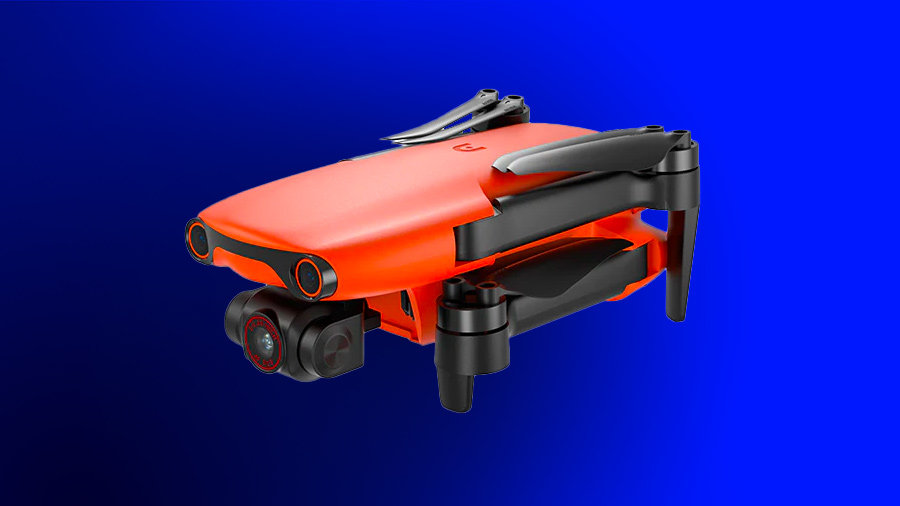
| Key features | |
| Image sensor | 1/1.28” CMOS |
| Image stabilization | 3-axis mechanical gimbal |
| Video resolution | 4K/2.7K @ 30 fps ; 1080p@60 fps |
| Image resolution | 50 MP |
| Camera features | HDR, AEB, SoundRecord, Image filters, fixed aperture at f/1.9, up to 4x zoom at 1080p |
| Flight time | 28 minutes |
| Flight and camera modes | Sky Portrait, Close, HyperLapse, Dynamic Track |
| Safety features | Obstacle avoidance sensors |
Pros
- Can shoot 4K videos
- 3-way obstacle avoidance
- Does not have automatic GeoFencing
- Comes with ATTI mode
Cons
- Can only shoot at 30 fps at 4K resolution
- Expensive
- Many camera features are disabled in Pro mode
Not one to be left behind, Autel has released their very own line of sub-250-gram drones called the Evo Nano series. The premium drone of this line is called the Autel Evo Nano Plus, a drone with a 1/1.3” CMOS sensor that can shoot 4K videos at 30 fps and is supported by a 3-axis mechanical gimbal.
True to the premium branding, the Autel Evo Nano Plus costs almost as much as the Mini 3 Pro. However, most of the features of the Nano Plus are a step down from its closest competitor. It can only record 4K videos at 30 fps and many of its higher-end camera features become inaccessible when you fly in Pro mode. This does diminish the value of the Evo Nano Plus as a camera drone, although it is still one of the best that weighs below 250 grams.
The Evo Nano Plus does have a few camera tricks that are not found in DJI drones. SkyPortrait mode lets you choose a group of people that the drone will automatically put in focus. The drone also has Close, Medium, or Long automatic shots that let you snap a quick portrait of any single subject.
Perhaps one of the more compelling reasons to get an Autel drone is the fact that Autel does not impose an automatic GeoFencing restriction on their aircraft. This could be a critical decision point if you frequently fly in or close to controlled airspace.
3. DJI Mini 2
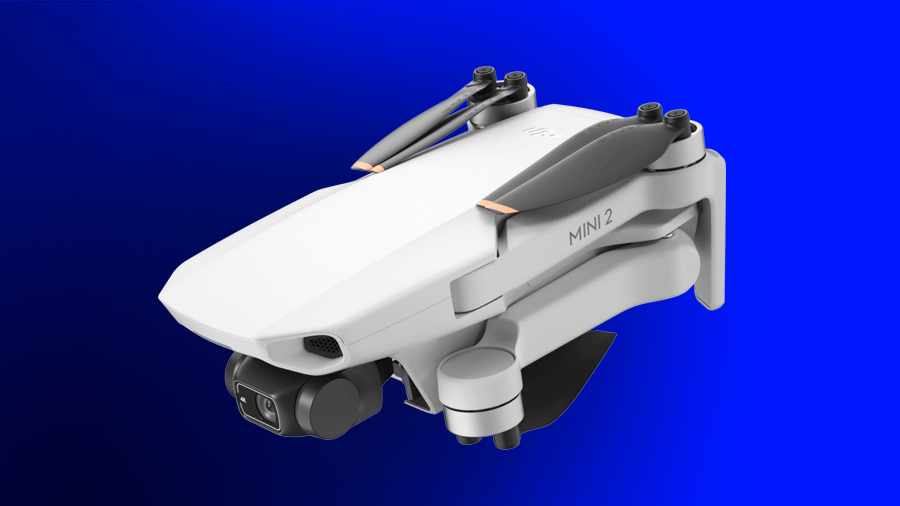
| Key features | |
| Image sensor | 1/2.3” CMOS |
| Image stabilization | 3-axis mechanical gimbal |
| Video resolution | 4K@ 30 fps ; 2.7K/1080p@60 fps |
| Image resolution | 12 MP |
| Camera features | AEB, fixed aperture at f/2.8, up to 4x zoom at 1080p |
| Flight time | 31 minutes |
| Flight and camera modes | Dronie, Helix, Rocket, Boomerang |
| Safety features | Downward-facing sensor, ADS-B, Return to Home |
Pros
- Can shoot 4K videos
- Has an ADS-B receiver
- More affordable than the Mini 3 Pro
Cons
- Can only shoot at 30 fps at 4K resolution
- No Intelligent Flight Modes
- Comes with GeoFencing feature
Before the Mini 3 Pro, there was the Mini 2. Launched in 2020, the middle child of the DJI Mini series boasted of a 4K camera, 3-axis mechanical gimbal, and DJI’s AirSense feature. While most of the drone’s features have become outdated, it’s one of the best lightweight drones that you can buy today for less than $500.
In the context of more modern drones, the features of the Mini 2 may seem basic. It can shoot 4K videos but only at 30 fps. If you want to upgrade to 60 fps, you will lower the resolution a notch to 2.7K. It does not have an HDR but can do auto-bracketing. With only a downward-facing sensor to aid in landing, it lacks a true obstacle avoidance system.
More experienced users of DJI drones may feel the absence of Intelligent Flight Modes in the Mini 2. This drone does not have the technology to identify or track subjects.
If you’re looking for a sub-250 drone with a good camera but are tight on budget, then the Mini 2 is still worth consideration. Although it’s dated, getting excellent drone shots with the Mini 2 is far from impossible.
4. Autel Evo Nano
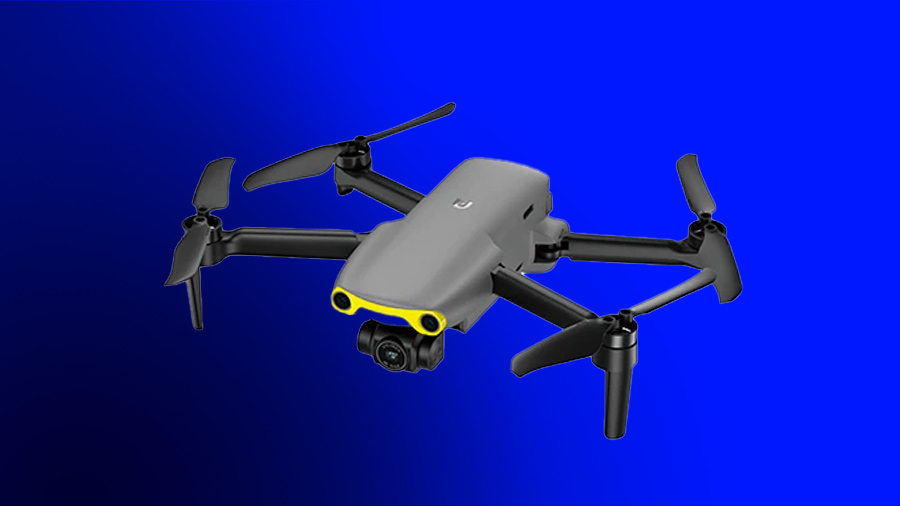
| Key features | |
| Image sensor | 1/2” CMOS |
| Image stabilization | 3-axis mechanical gimbal |
| Video resolution | 4K/2.7K @ 30 fps ; 1080p@60 fps |
| Image resolution | 48 MP |
| Camera features | HDR, AEB, SoundRecord, Image filters, fixed aperture at f/2.8, up to 4x zoom at 1080p |
| Flight time | 28 minutes |
| Flight and camera modes | Sky Portrait, Close, HyperLapse, Dynamic Track |
| Safety features | Obstacle avoidance sensors, Return to Home |
Pros
- Can shoot 4K videos
- Cheaper than the Nano+
- Has no GeoFencing feature
Cons
- Can only shoot at 30 fps at 4K resolution
- May be difficult to use in low light
The Autel Evo Nano is the “standard” drone of the Nano series. The only major difference it has compared to the Nano Plus is that it has a slightly smaller image sensor. The appearance of the two drones is exactly the same, as are all the other features. Thus, the standard Autel Evo Nano is worth considering if you want a good Autel drone but are a little short on budget.
The Autel Evo Nano has a ½” CMOS sensor that can capture stills at 48 MP and 4K videos at 30 fps. These specs are similar to the Mini 2, if not just slightly better. The Nano also has a fixed f/2.8 aperture, but this is noticeably smaller than that of the Nano Plus. This makes the Nano a bit more challenging to use in low light, especially since it is also a narrower range than the Nano Plus.
Again, the Nano can shoot 4K videos but only at 30 fps, just like the Nano Plus and Mini 2. The camera is still supported by a 3-axis mechanical gimbal and has HDR, AEB, the SoundRecord feature for recording ambient sounds, and up to 4x digital zoom.
Since this is an Autel drone, it does not come with a forced GeoFencing feature. Again, this is possibly one of the more compelling reasons to buy a drone from Autel.
As a downscaled version of the Nano Plus, the Autel Evo Nano is much closer in technical specifications to the DJI Mini 2. However, it is just a tad more expensive.
5. DJI Mini SE
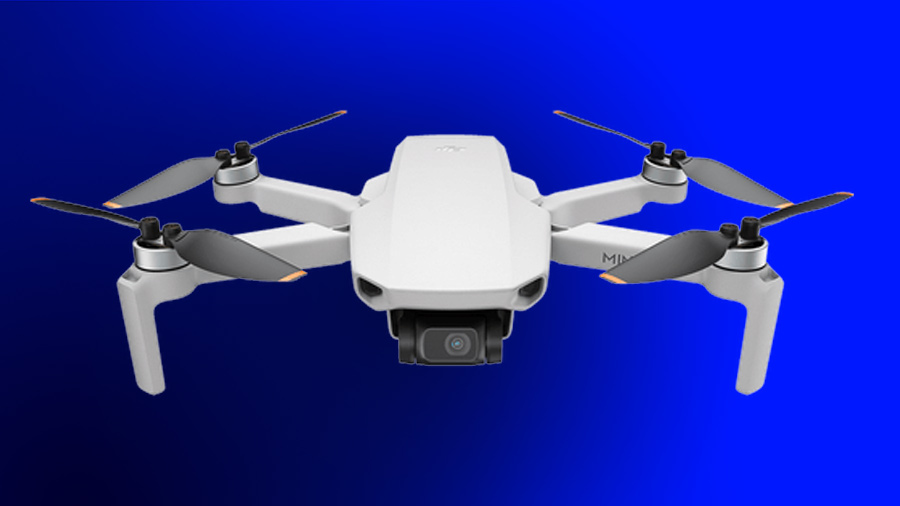
| Key features | |
| Image sensor | 1/2.3” CMOS |
| Image stabilization | 3-axis mechanical gimbal |
| Video resolution | 2.7K @ 30 fps ; 1080p@60 fps |
| Image resolution | 12 MP |
| Camera features | Fixed aperture at f/2.8 |
| Flight time | 30 minutes |
| Flight and camera modes | Dronie, Orbit, Rocket, Helix |
| Safety features | Downward-facing sensor only, Return to Home |
Pros
- Inexpensive
- Lengthy flight time
Cons
- Only shoots at 2.7K resolution
- No obstacle avoidance
- Comes with GeoFencing feature
- No advanced camera features
The DJI Mini SE became the cheapest DJI drone when it launched in mid-2021. Essentially an overhauled Mavic Mini, the Mini SE combines the internals of the original Mavic Mini with the look of the Mini 2 to create a drone that delivers excellent value for money.
The camera of the DJI Mini SE is the same as that of the Mavic Mini with a modest 1/2.3” image sensor that can shoot 12 MP stills and 2.7K videos at 30 fps. The lack of a 4K camera is a major drawback, although having a 3-way mechanical gimbal for a budget drone more than makes up for it.
In terms of camera features, the Mini SE may seem underwhelming. It has no digital zoom, no HDR or AEB modes, and cannot capture photos in RAW mode. If you’re looking for a camera drone for professional use, then the Mini SE simply lacks the power for it. The Mini SE also does not have any of the fancy DJI Intelligent Flight Modes, but it can pull off the standard drone tricks such as Dronie and Orbit.
Although its features are outdated, the DJI Mini SE holds the distinction as the cheapest DJI Mini drone that you can buy today and one of the best budget drones. If you’re just starting out, there is no better drone to get for $300.
6. Hubsan Zino Mini Pro

| Key features | |
| Image sensor | 1/1.3” CMOS |
| Image stabilization | 3-axis mechanical gimbal |
| Video resolution | 4K @ 30 fps |
| Image resolution | 12 MP |
| Camera features | Fixed aperture at f/1.85, up to 6x hybrid zoom, Enhanced HDR photos |
| Flight time | 35 minutes |
| Flight and camera modes | Active Tracking mode, GPS follow, Waypoint planning, Waypoint memory |
| Safety features | Three-direction obstacle avoidance, Return to Home |
Pros
- Can shoot 4K videos
- Comes with an obstacle avoidance system
Cons
- Expensive
- Records 4K videos at only 30 fps
Hubsan is a brand that is more well-known for budget drones, but this does not mean that they do not have a premium selection. The Zino Mini Pro certainly qualifies as a premium drone, both in terms of price and features.
The Zino Mini Pro has a fairly large 1/1.3” CMOS image sensor. With this, the drone can record 4K videos albeit at only 30 fps. The camera has a large fixed aperture, the ability to snap enhanced HDR photos, and can combine optical and digital zoom up to 6x.
The drone also has AI-aided subject tracking mode and can be programmed to follow a series of waypoints. The GPS Follow mode is great for taking action shots of yourself when there is no one else to fly the drone for you. It is equipped with rear, front, and bottom obstacle avoidance sensors that complement its automated flight modes.
The Hubsan Zino Mini Pro has all the makings of the more popular drone brands, down to having an Intelligent Flight Battery. With this drone, Hubsan is making a statement that the brand belongs in the conversation of the best sub-250-gram drones. Unfortunately, that also meant pricing the Zino Mini Pro in the same range as the DJI Mini 3 Pro and the Autel Evo Nano Plus.
7. Holy Stone HS510
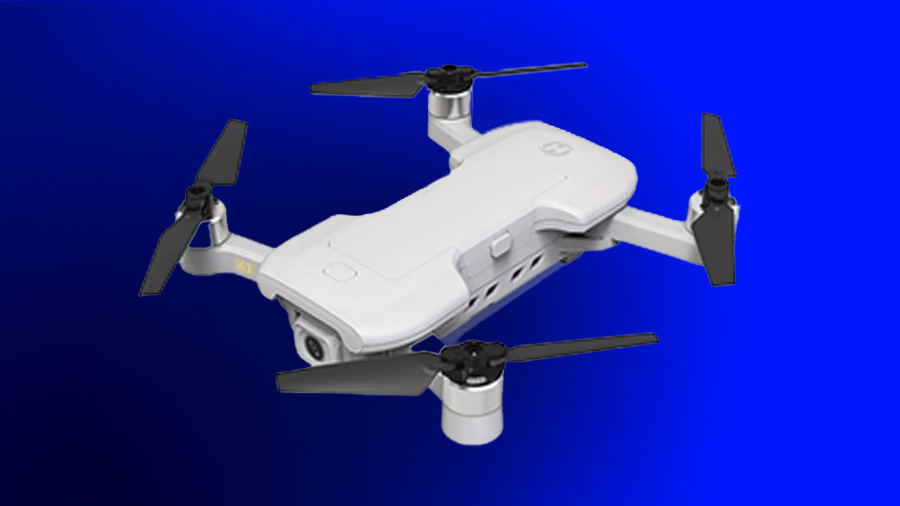
| Key features | |
| Image sensor | No info |
| Image stabilization | 3-axis mechanical gimbal |
| Video resolution | 4K @ 16 fps; 2.7L @ 25 fps |
| Image resolution | 50 MP |
| Camera features | No info |
| Flight time | 16 to 20 minutes |
| Flight and camera modes | GPS Follow Me, TapFly, Waypoints, Point of Interest |
| Safety features | Return to Home, Vision positioning sensor |
Pros
- Very inexpensive
- Easy to pick up for beginners
Cons
- Records videos at low framerates
- No obstacle avoidance system
- Basic camera features
Holy Stone is another brand that is more well-known for budget drones. For this list, we are featuring a very affordable drone that also happens to weigh less than 250 grams. The HS510 is certainly an affordable drone. For less than $200, the drone even comes with a carrying case and extra batteries.
The Holy Stone HS510 can record 4K videos. An impressive feat for a budget drone, although the max framerate for 4K videos is a paltry 16 fps. Even when downscaled to 1080p resolution, the framerate is still limited to only 25 fps. Suffice it to say that you will not be getting professional jobs with this drone.
Instead, the HS510 is more geared towards beginners. Its vision positioning sensor and GPS positioning help to keep the drone stable, even without any user input. It also has a couple of cool automatic flight modes including a GPS Follow Me mode that uses the GPS of your phone as a tether for the drone to follow.
Although it lacks sophisticated features, the budget-friendly price tag and beginner-friendly features of the HS510 make it a worthy entry on this list. Being the best does not always equate to being the most advanced.
Final thoughts
When the FAA came up with the 250-gram weight limit for drones that are exempted from registration, little did we know that it would give birth to an entirely new market segment for drones. Fortunately, a lot of drone brands have stepped up to the challenge of designing drones with advanced features but without going over the weight limit.
Through the years, sub-250-gram drones have improved at an impressive rate. Nowadays, these small and lightweight drones come with mechanical gimbals, 4K cameras, and obstacle avoidance sensors.
